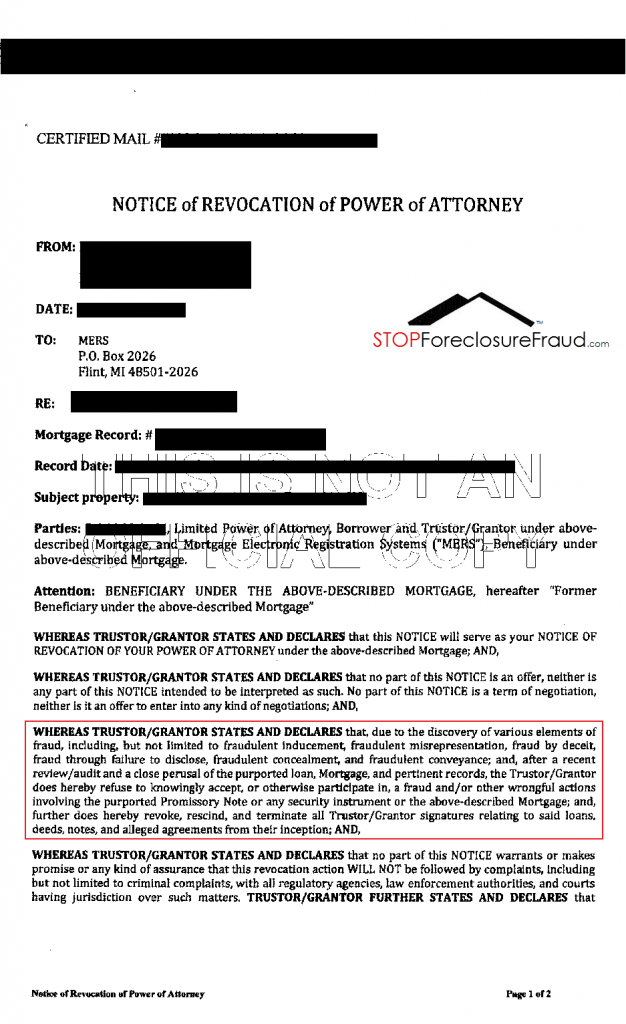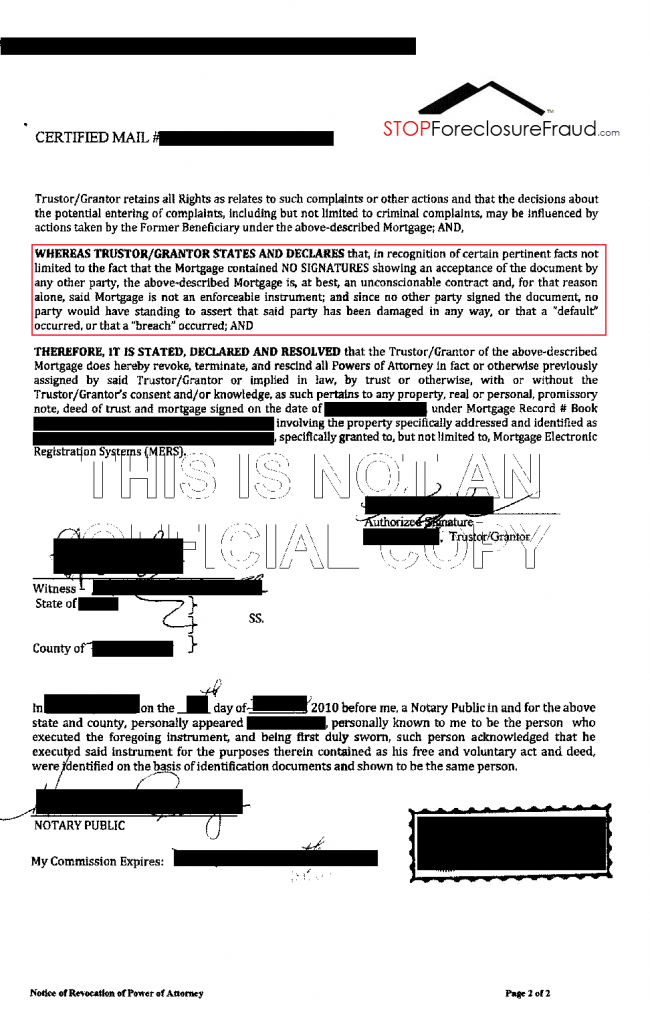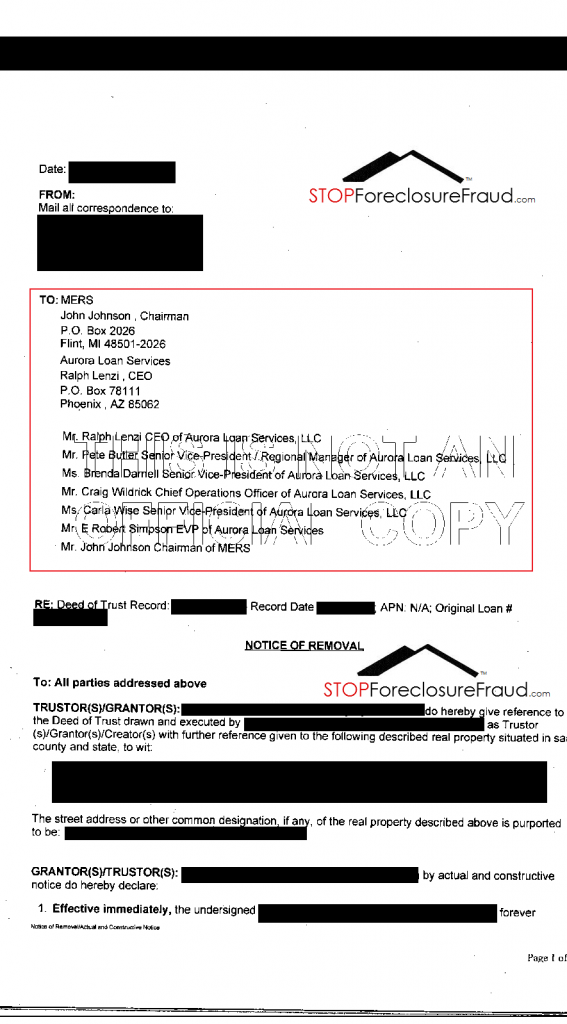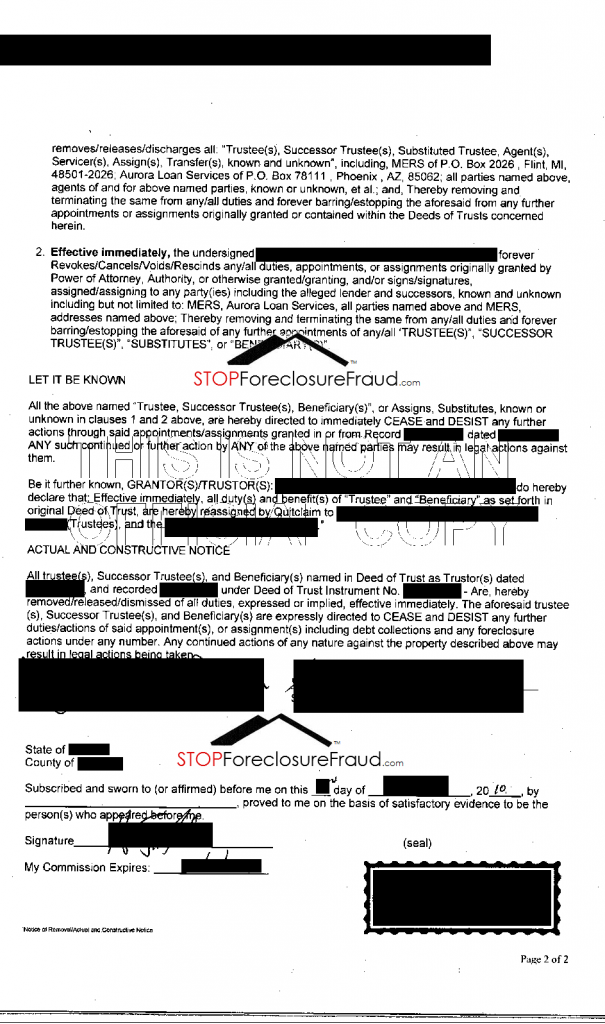In re MIKE ZITTA AND IRENA ZITTA, Debtors.
BAC HOME LOANS SERVICING, LP FKA COUNTRYWIDE HOME LOANS
SERVICING LP, its assignees and/or successors in interest, Movant,
v.
MIKE ZITTA AND IRENA ZITTA, Respondents.
No. 09-bk-19154-SSC
UNITED STATES BANKRUPTCY COURT
FOR THE DISTRICT OF ARIZONA
DATED: January 21, 2011.
Not for Publication-Electronic Docketing ONLY
AMENDED1 MEMORANDUM DECISION
I. PRELIMINARY STATEMENT
This Court recently received a Notice of Appeal filed by BAC Home Loans Servicing, L.P., f/k/a Countrywide Home Loans Servicing, L.P.(“BAC”) on December 23, 2010. The Notice of Appeal concerns the Court’s denial of a Motion for Reconsideration filed by BAC relating to its Motion for Relief from Stay in the Chapter 11 bankruptcy case of Mike and Irena Zitta (“Debtors”). Because BAC may have prematurely filed its Notice of Appeal, and because this Court had anticipated an opportunity to execute some sort of Order, with an appended memorandum decision on the issues presented, this Court will amplify its reasoning in denying the Motion for Reconsideration and clarify the record so that the Motion for Reconsideration may be heard on appeal.
BAC filed its Motion for Relief from Stay on August 30, 2010.2 Copies of the interest-only promissory note (“Note”), along with an allonge (“Allonge”), the recorded deed of trust (“Deed of Trust”), and the Broker’s price opinion were attached to the Motion.3 BAC also filed a declaration in support of the Motion.4 However, no assignment of the Deed of Trust from any entity to BAC was included. The Debtors filed a response/objection to the relief requested.5 The Court denied BAC’s Motion by Minute Entry Order issued on October 20, 2010 (the “Minute Entry Order”), because BAC had failed to provide a copy of an assignment of the Deed of Trust with its Motion.6 The October 20 Minute Entry Order was not executed by this Court.
On October 29, 2010, BAC filed a Motion for Reconsideration of the Minute Entry Order, asserting that under Arizona law, an assignment of the Deed of Trust was not necessary to establish standing to move for relief from the automatic stay.7 The Court heard the Motion for Reconsideration on December 15, 2010, and denied the requested relief. BAC never submitted a form of order denying the Motion for Reconsideration, and although a minute entry order was generated that same day outlining briefly the Court’s denial of the Motion, the minute entry order was never executed by this Court.8 Rather than wait for an appropriate form of order to be entered, BAC chose to file a Notice of Appeal on December 23, 2010.
In this Memorandum Decision, the Court has set forth its findings of fact and conclusions of law pursuant to Rule 7052 of the Rules of Bankruptcy Procedure. The issues addressed herein constitute a core proceeding over which this Court has jurisdiction. 28 U.S.C. §§ 1334(b) and 157(b) (West 2010).
II. FACTUAL DISCUSSION
In the Motion for Relief from Stay filed on August 30, 2010, BAC asserted that it was the “holder in due course” and that it was the “payee and a holder in due course under that certain Promissory Note dated March 20, 2007.”9 The Note attached to the Motion for Relief from Stay stated that GreenPoint Mortgage Funding, Inc., had provided the financing to the Debtors so that the Debtors could acquire the real property located at 5100 East Blue Jay Lane, Flagstaff, Arizona (“Property”).10 The Note further stated that anyone taking the Note “by transfer and who [was] entitled to receive payments under [the] Note [was] called the “Note Holder.”11 The Allonge, dated March 20, 2007, stated as follows: “Pay to the Order of BAC Home Loans Servicing, LP f/k/a Countrywide Home Loan Servicing, LP without recourse.”12 GreenPoint Mortgage Funding, Inc. had executed the Allonge, although the signature is difficult to discern.13 The Deed of Trust attached to the Motion for Relief from Stay stated that GreenPoint Mortgage Funding, Inc. was the lender and that MERS was the nominee for the lender. Specifically, the Deed of Trust stated:
(E) “MERS” is Mortgage Electronic Registration Systems, Inc. MERS is a separate corporation that is acting solely as a nominee for Lender and Lender’s successors and assigns. MERS is the beneficiary under this Security Instrument.14
The Deed of Trust stated that the Debtors acknowledged or executed the document on March 21, 2007, although the Allonge and the Note had an execution date of March 20, 2007. Finally, the Declaration submitted in support of the Motion for Relief from Stay stated that “[it] is in the regular course and scope and business for BAC Home Loans Servicing, LP f/k/a Countrywide Home Loans Servicing LP to prepare and maintain books and records relating to the status of the servicing of Movant’s Deed of Trust.”15 The Declaration also stated that “Movant is the payee under that certain Promissory Note dated March 20, 2007…. Further, Movant is the present holder and owner of that certain First Deed of Trust of same date…. securing said Note against Debtors’ property….”16 Thus, BAC’s Declaration creates an ambiguity as to whether BAC is the servicer of the loan or whether it is the Note Holder who is entitled to payments under the Debtors’ Note obligation. The documentation presented by BAC also includes a security agreement, granting BAC a security interest in the Note.17
A review of the Motion for Relief from Stay reflects the myriad problems that this and other Courts are facing in attempting to handle the tremendous volume of such motions that are filed in the numerous bankruptcy cases that are pending across the country. First, the Motion that was filed in this case appears to be a form that may have been imperfectly tailored to the facts of this case. For instance, the Motion for Relief from Stay alleges that GreenPoint Mortgage Funding, Inc. “was the original lender on the subject Note and Deed of Trust. Thereafter, GreenPoint Mortgage Funding, Inc. assigned all of its rights, title and interest in and to said [N]ote and Deed of Trust to BAC Home Loans Servicing, L.P., f/k/a Countrywide Home Loans Servicing, L.P. by way of an Allonge….”18 However, as noted previously, the Declaration seems to indicate that BAC was acting as a servicer. If BAC was simply the servicer, then for whom was BAC receiving payments under the Note? If BAC was holding the Note as the servicer, for whom was it acting? If BAC was the Note Holder, as defined in the Note, then why does the Declaration state that BAC operates as a servicer? Another way to state the problem is that the Motion for Relief from the Stay and the Declaration seem to reflect imperfectly the transfer of the various interests in the Note and Deed of Trust. Given the posture of the record presented to the Court, and the lack of clarity, the Court denied the Motion for Relief from Stay by Minute Entry Order on October 20, 2010. Rather than clarify the record by filing the appropriate assignment, a further declaration or affidavit, or some other documentation, BAC filed its Motion for Reconsideration. BAC chose to provide no further information to the Court from a factual standpoint.
III. LEGAL DISCUSSION
The Motion for Reconsideration
As outlined above, part of the problem with the issues to be decided is the context in which the matters have been presented to the Court. When a motion for relief from stay is filed, the Bankruptcy Code, the Rules of Bankruptcy Procedure, and the Local Rules of this Court are immediately applicable or implicated.
11 U.S.C. §362 (d) states that the bankruptcy court may, for instance, terminate, modify, or condition the automatic stay (1) “for cause, including the lack of adequate protection of an interest in property of such party in interest,” or (2) “with respect to a stay of an act against
property under subsection (a) of this section if-(A) the debtor does not have an equity interest in such property; and (B) such property is not necessary to an effective reorganization.”19 Section 362(g) states that the party requesting relief from the automatic stay has the burden of proof of whether the debtor has any equity in the property at issue.20 The Local Rules of the Arizona Bankruptcy Court further require that a party filing a motion for relief from the automatic stay be able to provide some support for the relief requested. For instance, if the party is stating that it is a secured creditor requesting relief from the automatic stay to pursue a trustee’s sale under Arizona law, the secured creditor should be able to provide support in the motion that it has a perfected security interest in property of the estate in which the debtor or debtor in possession also has an interest.21
In reviewing the sufficiency of any motion for relief from the automatic stay, the court must also consider under what provision of the Bankruptcy Code the debtor has filed. For instance, if the individual debtor has filed a chapter 7 petition, a trustee in bankruptcy is appointed that must collect and liquidate property of the estate, that has not been claimed exempt by the debtor, for distribution to the debtor’s creditors, according to the priorities set forth in the Bankruptcy Code.22 The trustee in bankruptcy may increase the amount of property of the estate available for distribution to creditors by exercising certain avoidance powers enumerated, inter alia, in Bankruptcy Code Sections 544, 547, and 548.23 An individual debtor may acquire the same duties and responsibilities of a trustee in bankruptcy by filing a chapter 11 petition, seeking to reorganize or to file a plan of liquidation.24 Because the debtor in possession is vested with the same powers of the trustee, the debtor in possession may pursue avoidance actions as well.25 In this case, the individual Debtors filed a chapter 11 petition seeking to reorganize, and no bankruptcy trustee has yet been appointed in this case. As a result, the Debtors exercise the rights of a bankruptcy trustee concerning the ability to avoid certain transfers or transactions.
Because of the avoidance powers of the bankruptcy trustee or the debtor in possession, this Court requires that if a party seeking relief from the automatic stay asserts a perfected security interest in any property of the estate, that moving party must be able to present at least a prima faciecase that it has such a perfected security interest under applicable law.26 The fact that the transaction is not avoidable between the parties to the underlying loan transaction is not dispositive of whether the transaction may be avoided by third parties that are, for instance, bona fidepurchasers.27
Turning to the standards of a motion for reconsideration, the moving party must show a manifest error of fact, a manifest error of law, or newly discovered evidence. School Dist. No. 1J Multnomah County, OR v. ACandS, Inc., 5 F.3d 1255, 1263 (9th Cir. 1993); In re Gurr, 194 B.R. 474 (Bankr. D. Ariz. 1996). A motion for reconsideration is not specifically contemplated by the Federal Rules. To the extent it is considered by the Court, it is under Fed. R. Civ. P. 59(e) to alter or amend an order or judgment. In re Curry and Sorensen, Inc., 57 B.R. 824, 827 (Bankr. 9th Cir. 1986). Because BAC presented no new evidence to this Court and has not outlined any manifest error of fact, the sole basis for the BAC Motion for Reconsideration must be a manifest error of law by this Court. BAC has outlined several bases for what it believes is this Court’s manifest error of law.
(A) Is the Movant the Real Party in Interest?
A colleague in the Arizona Bankruptcy Court has stated that a party that brings a motion for relief from the automatic stay must first establish a “colorable claim.” “In order to establish [such a claim], a movant…. bears the burden of proof that it has standing to bring the motion.” In re Weisband, 427 B.R. 13, 18 (Bankr. D. Ariz. 2010) (citing In re Wilhelm, 407 B.R. 392, 400 (Bankr. D. Idaho 2009)). In the Weisband decision, the Court states that the moving party may establish standing by showing that it is a “real party in interest.”28 The Weisband Court next states that a holder of a note is a “real party in interest” under FRCP 17 because, under the Arizona Revised Statute (“ARS”) § 47-3301, the note holder has the right to enforce it. Weisband at 18. Relying on a decision from a bankruptcy court in Vermont, the Weisband Court next opines that “[b]ecause there is no federal commercial law which defines who is a note holder, the court must look to Arizona law to determine whether [movant] is [such] a holder.” Id. (citing In re Montagne, 421 B.R. 65, 73 (Bankr. D. Vt. 2009)). Finally, the Weisband Court states that under Arizona law, a holder of a note is defined as, inter alia, “the person in possession of a negotiable instrument that is payable either to bearer or to an identified person that is the person in possession.” Id. (citing ARS § 47-1201(B)(21)(a)).
BAC’s citation to Weisband fails to address this Court’s concerns. In the Motion for Relief, BAC contends that it is the “payee and a holder in due course.” However, the Declaration that it filed appears to reflect that BAC is the servicer for some other party. Obviously there is a difference. A servicer acts pursuant to a separate agreement with the Note Holder and is paid a separate fee to determine what payments have been made, or not made, by a given borrower. However, the servicer would not normally list the loan on its balance sheet as one of its assets. The Note Holder, according to the definition in the Note, is the party that is entitled to receive the payments under the Note, because it has arguably paid some consideration for the transfer of the obligation to it, and has listed the obligation as an asset in its books and records.29 BAC has not provided any additional facts to clarify whether it is the servicer pursuant to an agreement with the Note Holder, or contrary to its Declaration, it actually acquired the loan and has placed the loan on its balance sheet as one of its assets.
From the documentation provided by BAC, it appears that GreenPoint provided the original funding for the loan to the Debtors so that they could acquire the Property. Yet, at the time of the closing, GreenPoint immediately assigned its interest in the Note to BAC. The Declaration submitted by BAC, however, seems to indicate that BAC is only in the business of servicing loans-perhaps for some other entity associated or related to BAC. If BAC Home Loans Servicing, LP, is acting as the servicer of a Bank of America entity, for which entity is it acting? Conversely, if GreenPoint transferred the Debtors’ loan from its books and records to some other entity, was it BAC? If BAC alleges in its Motion for Relief from the Stay that it is the Note Holder, is it, in fact, the one legally entitled, because of the purchase of the Debtors’ obligation, to receive the Debtors’ payments?
As a part of its prima faciecase, BAC should have provided the Court with more factual information in support of its position. As a result, this Court may deny the Motion for Reconsideration, and the underlying Motion for Relief from the Stay, on the basis that BAC has failed to provide sufficient documentation to this Court so that the Court may ensure that BAC is the proper Note Holder, or servicer if appropriate, to pursue such a Motion for Relief from the Stay.
Thus, the focus of the BAC’s Motion for Reconsideration does not consider all of the factual and legal issues that it should. It does not address whether BAC, in this matter, has presented an appropriate factual and legal basis to proceed on this loan concerning the Debtors and their Property. BAC could have easily supplemented the record to provide the appropriate documentation to proceed, but chose not to do so.
(B) Has BAC Set Forth a Prima Facie Case That It Has
A Perfected Security Interest in the Property Given the Status
Of the Debtors As Debtors In Possession?
In its Motion for Reconsideration, BAC relies on ARS § 33-817, which states, “The transfer of any contract or contracts secured by a trust deed shall operate as a transfer of the security for such contract or contracts.” ARS § 33-817. BAC further points out that the Supreme Court of Arizona has held that a mortgage is a “mere incident to the debt,” and its “transfer or assignment does not transfer or assign the debt or the note,” but “the mortgage automatically goes along with the assignment or transfer” of the note. Hill v. Favour, 84 P.2d 575, 578 (Ariz. 1938) (emphasis added). However, at the hearing on December 15, 2010, the Court expressly stated its concern about the ability of BAC to proceed given that it had not provided any information as to a recorded assignment of the Deed of Trust. The Court asked counsel how her analysis was appropriate given (1) the status of the Debtors as Debtors in Possession who had objected to the relief requested, and (2) ARS § 33-818 which provides, in pertinent part, as follows:
[A]ssignment of a beneficial interest under a trust deed,… shall from the time of being recorded impart notice of the content to all persons, including subsequent purchasers and encumbrancers for value.
As outlined above, the Debtors, as Debtors in Possession, acquire the status of a bona fide purchaser and are able to set aside any real estate transaction, concerning their Property, for which the creditor has not taken appropriate steps under Arizona law. See 11 U.S.C. § 544(a)(3) (West 2010). Arizona law requires that if a secured creditor with a lien on the Debtors’ Property wishes to ensure that said interest is not subject to the claims of a bona fide purchaser, that said secured creditor record an assignment of its interest with the Recorder in the County where the Debtors’ Property is located. If notice of the assignment has not been provided, through recordation, the secured creditor may have its interest avoided by a bona fide purchaser. See Rodney v. Arizona Bank, 836 P.2d 434, 172 Ariz. 221 (Ariz. App. Div. 2 1992) (Unless and until the transferee of the beneficial interest in the deed of trust records an assignment of the deed of trust, the security interest in the real property remains unperfected.)
At the time of the hearing on the Motion for Reconsideration, BAC’s counsel agreed that although vis-a-vis the original parties to the transaction, no assignment of the Deed of Trust need be produced or recorded, because of the Debtors’ filing of a bankruptcy petition, ARS § 33-818 required that an assignment be prepared and properly recorded given the new status of the Debtors as Debtors in Possession.30 It is unclear why BAC has not simply supplemented the record to provide the assignment of the Deed of Trust.
The request that an assignment be recorded is not a burdensome requirement. MERS, through its registration system, keeps track of the transfers of the beneficial interests, under a deed of trust, from member to member in the system. When there is some type of default under the loan transaction, MERS generally prepares an assignment of the beneficial interest in the deed of trust for signature and then records the assignment with the appropriate state authority, which in Arizona would be the Recorder in the County where the real property that is subject to the secured creditor’s lien is located. This recordation of the assignment provides the requisite notice to third parties, as required under Arizona law.
Although BAC relies on the decision of Rodney v. Arizona Bank, 836 P.2d 434, 172 Ariz. 221 (Ariz. App. Div. 2 1992), the decision actually supports this Court’s understanding of the importance of the recordation of the assignment of the deed of trust. In Rodney, the borrowers were the Vasquezes, who received purchase money financing from the initial lender, Hal Clonts (“Clonts”), to purchase real property (“Property”) located in Mohave County. The Vasquezes executed a promissory note and deed of trust in favor of Clonts to provide him with a lien on their Property to secure repayment of the note. It is important to keep in mind that the Vasquezes remained the borrowers throughout a series of subsequent transactions that only affected the lender or the party that had a security interest in the promissory note and deed of trust.
Clonts transferred his interest to the Fidlers through an assignment of the beneficial interest in the promissory note and deed of trust. Id. at 435. However, on April 11, 1985, the Fidlers entered into a separate loan transaction in which they borrowed money from a third party, State Bank, later called Security Pacific Bank Arizona (“Security Pacific”). The Fidlers provided security to Security Pacific for their loan transaction by pledging “all monies” received by the Fidlers in “Escrow # 85-02-9290.” Id. Security Pacific immediately notified the title company, for the subject escrow, as to Security Pacific’s interest in the escrow funds. In September 1986, the Fidlers again transferred their beneficial interest in the promissory note and deed of trust to Theron Rodney (“Rodney”). The Fidlers received $20,000 from Rodney for the transfer of their interest. The Fidlers executed an assignment of the beneficial interest under the deed of trust. Rodney recorded his interest in the deed of trust with the Mohave County Recorder’s Officer where the Property was located. Not surprisingly, Security Pacific and Rodney disagreed as to the priority of their respective security interests in the loan proceeds. Security Pacific argued that the interest in the loan proceeds could only be perfected pursuant to the Uniform Commercial Code. Conversely, Rodney argued that the real property provisions of Arizona law were applicable. Id. at 436.
The sole issue to be addressed by the Appellate Court was whether Article Nine of the Uniform Commercial Code (as adopted in Arizona) applied to the creation and perfection of a security interest in a promissory note when the note itself was secured by a deed of trust in real property. Id. Before considering the analysis by the Court, let’s diagram the various loan transactions.
+——————————————————————————————————–+———————————————+
| The Vasquezes | Clonts |
| —- | |
+——————————————————————————————————–+———————————————+
| initial borrowers purchase money financing | initial lender |
+——————————————————————————————————–+——————————————————————+
| Vasquezes continue to pay on the original note and deed of trust to the title company, as escrow agent | (1) transfer of the interest in the note and deed of trust for consideration to the Fidlers |
| | (2) separate loan to the Fidlers–security interest in the note and deed of trust given to Security Pacific-consideration given to Fidlers |
| | (3) Fidlers again seek financing–security interest in the note and deed of trust given to Rodney |
| | for $20,000. |
+——————————————————————————————————–+——————————————————————–+
| | |
+——————————————————————————————————–+——————————————————————–+
Thus, it is only the parties on one side of the initial loan transaction that are in disagreement as to the priority of their security interests. Noting that Security Pacific only wanted to obtain a perfected security interest in the promissory note proceeds, the Court stated “we find that Security Pacific received a corollary security interest in the real property evidenced by the deed of trust, along with its interest in the note, although the corollary interest remained unperfected.” Id. The Court then stated that Security Pacific need not have a perfected security interest in the real property, because Security Pacific’s interest was only in the note which was a security interest in personal property under ARS § 47-1201(37). Id. at 436-37. The Court concluded that “Arizona case law holds that a mortgage note and the debt evidenced thereby are personal property (citing to Hill v. Favour, 52 Ariz. at 571, 84 P.2d at 579). Article Nine of the UCC applies to security interests in personal property….” Id. at 437. However, Article Nine of the Uniform Commercial Code does not apply to obtaining a lien on real property. In considering the somewhat murky area of “realty paper,” the Court relied on Commentators J White and R. Summers, who described “realty paper” as follows:
B mortgages his real estate to L. L gives B’s note and the real estate mortgage to Bank as security for a loan. Article Nine does not apply to the transaction between L and B, but does apply to that between L and Bank.
Id.31 Turning to the facts of this case, BAC is arguing that its security interest in the Note and Deed of Trust is perfected as to all others, rather than to just other mortgagees. It has forgotten the other side of the transaction, which is the “mortgagor” in the White and Summers analysis, or someone that may acquire an interest from the mortgagor, such as a bona fide purchaser. To perfect its interest as to the “mortgagor,” which would be the Zittas, or someone who may acquire an interest in the Property from the Zittas, BAC needed to record its assignment in the Deed of Trust, as required under real property law, such as ARS § 33-818 (West 2010). BAC has not shown this Court that any such assignment exists, so its Motion for Reconsideration must be denied as a matter of law.
BAC also relies on In re Smith, 366 B.R. 149 (Bank. D. Colo. 2007), which is inapposite. The debtor had been in a chapter 13 proceeding, but had converted his case to one under chapter 7. Id. at 150. Bank of New York, N.A. (“Bank of New York”) subsequently requested relief from the automatic stay as to the real property owned by the debtor. The debtor did not oppose the motion, and a foreclosure sale, pursuant to Colorado law, subsequently occurred. Bank of New York then recorded a deed upon sale as to the debtor’s real property. Without seeking any stay of the foreclosure proceedings, the debtor filed an adversary proceeding with the bankruptcy court. The debtor asserted that the Bank of New York was not the real party in interest, and therefore, it was unable to proceed with a foreclosure of his real property. The bankruptcy court reviewed the evidence presented and determined that Bank of New York was the holder of the promissory note at the time it commenced its foreclosure sale. The court stated that Countrywide Home Loans, Inc., which had originally provided the financing to the debtor, had endorsed the promissory note in blank. Under Colorado law, such a blank endorsement allowed the promissory note to become “payable to bearer.” However, Bank of New York did submit a Certification of Owner and Holder of the Evidence Debt, which allowed the Colorado court to conclude that Bank of New York was the “holder of the original evidence of debt.” The court then reviewed the deed of trust, determining that it was recorded at approximately the same time as the loan closing between the debtor and Countrywide Home Loan, Inc. The bankruptcy court then concluded that the promissory note was assigned to the Bank of New York. As such, once the promissory note was assigned to the Bank of New York, MERS then functioned as the nominee for the Bank of New York. Id. at 151. Presumably, as a result of MERS nominee status, the bankruptcy court concluded, sub silentio, that no additional action needed to be taken by Bank of New York vis-a-vis the debtor.
This Court questions the analysis by the Smith court.32 Although the Smith court relies on a 2002 decision from the Colorado Supreme Court, the court does not analyze the concept of “realty paper” or discuss White and Summers. As noted by this Court supra, the lender in the original loan transaction or a party that may subsequently obtain a security interest in the promissory note, as a result of a separate loan transaction, may be protected, but this Court is viewing the transaction from a different viewpoint: that of the Debtors in Possession that acquire the status of bona fide purchasers. There is no discussion, in Smith, as to how Colorado law would treat such third parties. Moreover, it is unclear whether Colorado has a similar provision as Arizona’s ARS § 33-818 that focuses on the separate requirements of a creditor that may have a beneficial interest under a deed of trust assigned to it.
In considering the ability of the debtor to pursue a claim under 11 U.S.C. § 544, the Colorado court concludes that the debtor does not have the standing of the bankruptcy trustee. Smith at 152. Such an analysis is correct, since the debtor pursued his claim against the Bank of New York only after he had converted his case to one under chapter 7. The chapter 7 trustee also failed to join with the debtor in the adversary proceeding or to pursue the claim separately.33 However, as to the facts before this Court, the Debtors, as Debtor in Possession, in this chapter 11 proceeding do have the standing to pursue claims under Section 544.34 Thus, this Court must reject the analysis in the Smith case.
This Court concludes that given the summary nature of motions for relief from the automatic stay, 35 the general requirements in the case law and the Local Rules of this Court36 that a creditor alleging a security interest in certain property of the debtor and/or the bankruptcy estate at least set forth a prima facie case as to its perfected security interest, 37 BAC should have provided an assignment of the Deed of Trust. It failed to do so; however, the Motion for Relief from the Automatic Stay was denied without prejudice. BAC still has the opportunity to refile the Motion with the appropriate documents as exhibits thereto.
IV. CONCLUSION
For the foregoing reasons, the Court denies BAC Home Loans Servicing, LP’s Motion for Reconsideration of this Court’s Denial of the Motion for Relief from the Automatic Stay. The Court
SARAH SHARER CURLEY, Bankruptcy Judge
[ipaper docId=47798871 access_key=key-9hxj7sdojtiuip83eoq height=600 width=600 /]
© 2010-19 FORECLOSURE FRAUD | by DinSFLA. All rights reserved.







![[MUST READ] NOTICE OF RECORDED MERS et al REMOVAL](https://stopforeclosurefraud.com/wp-content/themes/gazette/thumb.php?src=wp-content/uploads/2010/11/programremoved.jpg&w=100&h=57&zc=1&q=90)
























Recent Comments